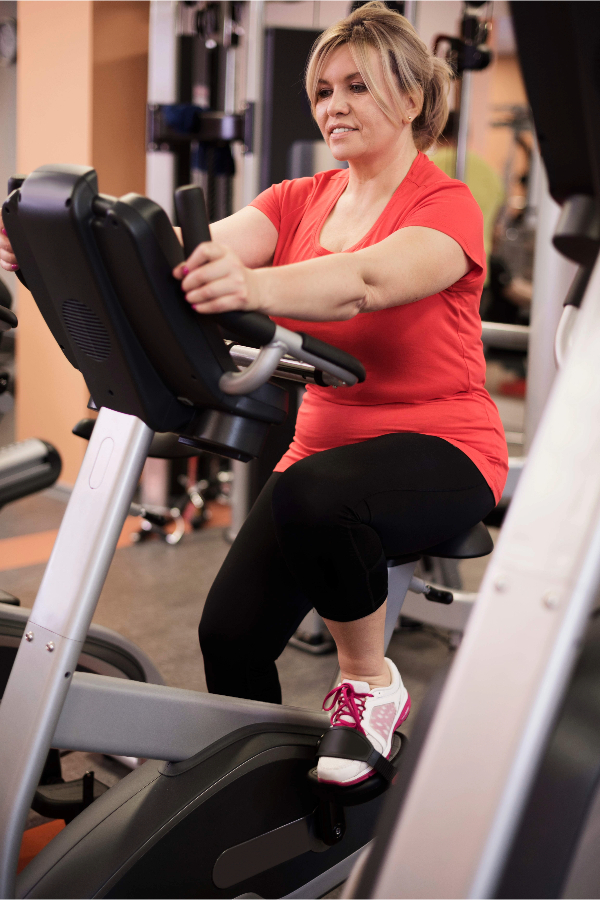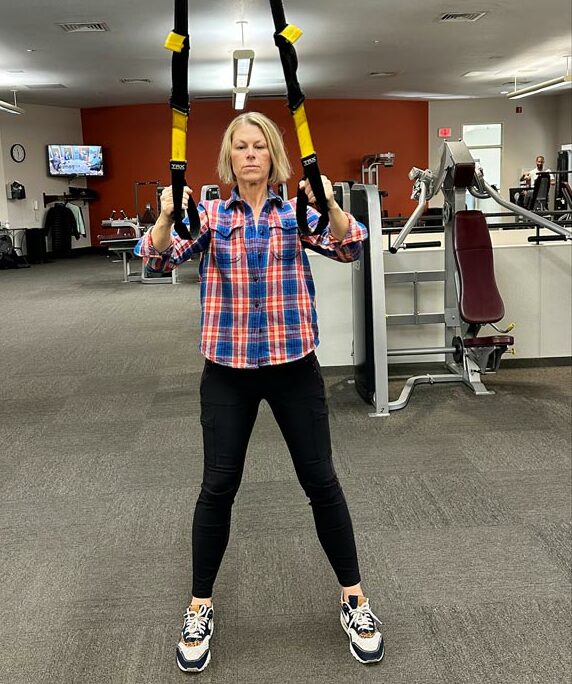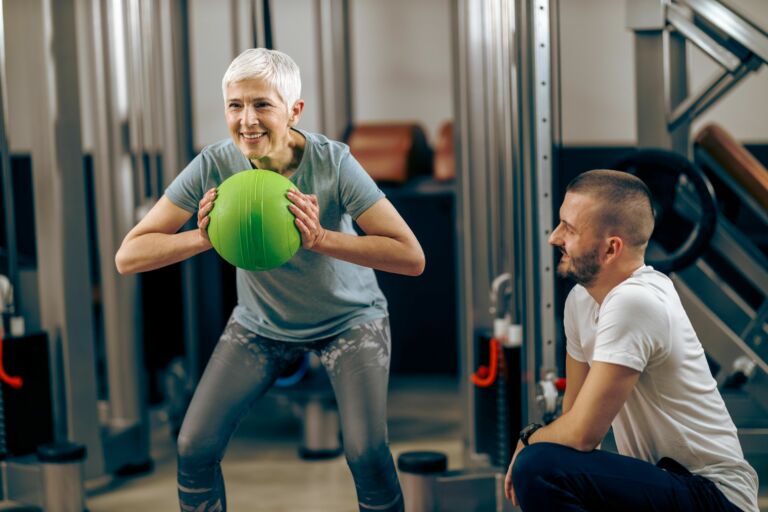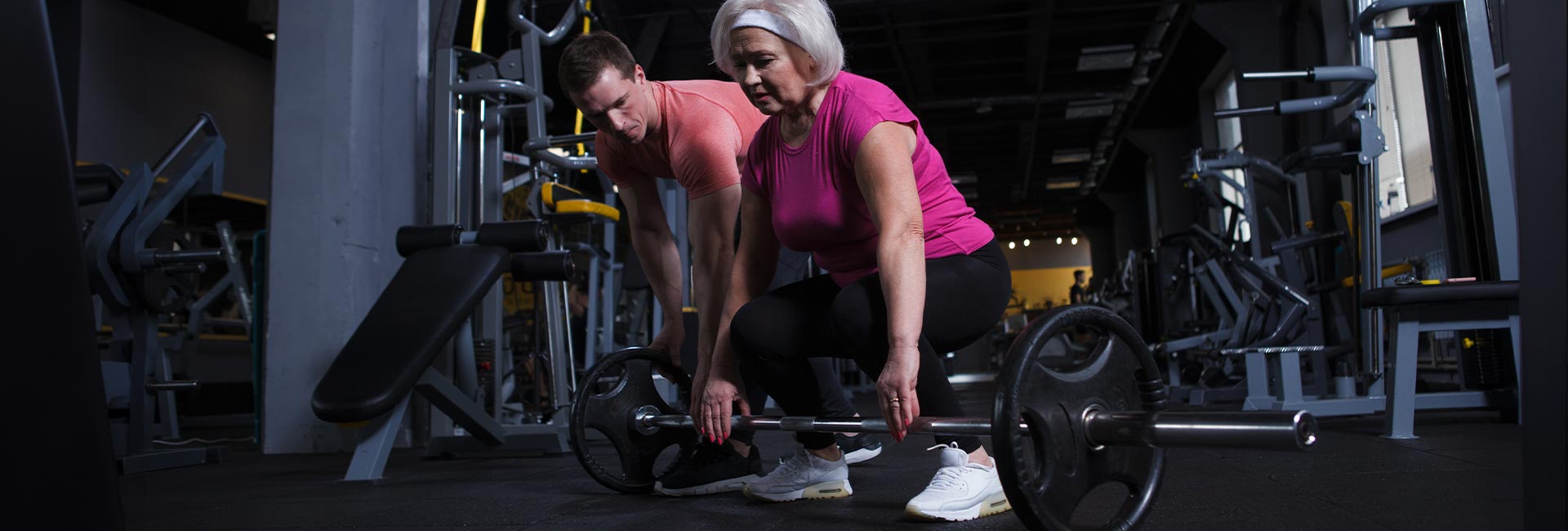For active, performance-minded women, maintaining strong muscles is not just about conquering the next trail or hitting personal fitness goals – it is also about enhancing vitality and longevity. Menopause, a significant life stage, becomes a crucial time for women to focus on building and preserving muscle mass. As musculoskeletal experts, physical therapists can be a valuable ally for women during the journey into and through menopause.
Physical changes during menopause
Research highlights that menopause is a vulnerable period for the loss of muscle mass, which is inversely associated with the risk of early death. This reinforces the importance of focusing on strength training during this stage of life.
A 2021 study revealed that compared to women in early perimenopause, those in late perimenopause had 10 percent less muscle mass in their arms and legs. Late perimenopausal and postmenopausal women were also overwhelmingly more likely to have sarcopenia (involuntary muscle loss) than premenopausal or early perimenopausal women.
Hormones, particularly estrogen, play a pivotal role in maintaining muscle health, including both mass and strength. Testosterone gives the body its muscles, but estrogen also plays an important role in building muscle and maintaining lean body mass.
Estrogen regulates satellite cell function – muscle stem cells are known as satellite cells because they appear to orbit the muscle fiber cells, which helps maintain muscles. Muscle biopsies in women in the menopause transition show that estrogen levels are linked to the number of satellite cells.
As estrogen levels decline during menopause, leading to a decrease in the number of satellite cells working to maintain the strength and structure of muscles, deliberate muscle stimulation becomes crucial to counteract the inherent muscle loss.
Benefits of resistance training during menopause
Strength training, especially resistance training, proves to be a powerful tool in activating muscle-building stem cells and maintaining lean body mass.
This type of exercise also addresses various other challenges associated with menopause.
- Metabolism
Postmenopausal women often experience a decrease in energy expenditure during physical activity. According to a study published in the American Journal of Physiology-Endocrinology and Metabolism, postmenopausal women use 19 percent less energy during a 45-minute cycling test than premenopausal women. The research indicates that lean body mass seems to be the most important contributor to the observed changes in metabolism in women in the early stages after menopause.
Resistance training counteracts this by preserving lean body mass, promoting efficient metabolism.


- Insulin sensitivity
Estrogen is a key player in insulin sensitivity in the female body. As estrogen decreases during menopause, the body becomes less responsive and more resistant to insulin. Instead of shuttling blood sugar into our muscles for energy when needed, the body will move it to fat storage. Even if you don’t see an increase in body weight you are likely to see a decrease in muscle mass and an increase in body fat.
Resistance training improves insulin sensitivity, lowers blood pressure, reduces visceral (dee belly) fat, and improves immunity, supporting overall well-being.
- Bone health
Menopause is a critical time for bone density, with up to 20 percent of women’s bone loss happening during this time of life. Resistance training contributes significantly to building strong bones. Focusing on “big lifts” such as deadlifts, squats, and lunges helps distribute force across multiple muscles, connective tissues, and joints, minimizing the risk of injury while maximizing outcomes. A recommended routine includes 3-5 sets of 6 or fewer reps with full rest between sets.

Sleep challenges during menopause
Estrogen helps the body get into deep, slow-wave restorative sleep. Estrogen is strongly associated with serotonin, a brain chemical that is converted to melatonin – a hormone that regulates sleep. When estrogen levels decline, it leads to low serotonin activity which reduces the amount of melatonin produced.
According to the National Sleep Foundation, roughly 61 percent of menopausal women have trouble with sleep. Poor sleep can cause brain fog, and fatigue, affect athletic performance, limit training adaptations, and lead to weight gain. When the lack of sleep becomes a frequent struggle, it can magnify these symptoms.
How physical therapy can help women navigating menopause
Physical therapy is an often-overlooked resource to help women in this phase of life and beyond. As musculoskeletal and movement experts, PTs can help prepare women for menopause, and combat some of the side effects while also supporting a long and healthy life.
Utilizing shared decision-making, physical therapists work with women to create customized exercise programs designed to build and maintain muscle, address decreased insulin sensitivity, increase bone density, and support restorative sleep. Each program is optimized to maximize outcomes while promoting proper form and intensity to avoid injury.

Navigating menopause as an active woman involves embracing strength training, fostering muscle health, and prioritizing overall well-being. Physical therapy can be a valuable tool, offering personalized guidance to address the unique challenges of this life stage. By investing in strength, resilience, and quality sleep, women can empower themselves to lead vibrant, active lives during and beyond menopause.
Learn more by exploring our related blog posts below!

5 Functional Fitness Moves for Aging Adults
Strength loss is a natural part of the aging process, but that does not mean we can’t work on getting stronger. In fact, it means strength training is even more important for older adults.

Harmonizing Hormones and Respiration
This article explores the impact of the most common breathing dysfunction, hyperventilation (AKA over breathing) on oxygenation and reviews specific considerations for women.

5 Exercises for Healthy Bones
Bones are excellent adaptors and grow stronger when they are loaded, or given a stimulus that makes them do their job to hold your skeleton up. Consistent strength training or weight bearing exercise can increase bone density and help prevent or manage osteoporosis.

Explore how physical therapy can help during menopause.
As musculoskeletal experts, physical therapists can be a valuable ally for women during the journey into and through menopause.

